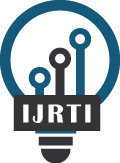|
International Journal for Research Trends and Innovation
International Peer Reviewed & Refereed Journals, Open Access Journal
ISSN Approved Journal No: 2456-3315 | Impact factor: 8.14 | ESTD Year: 2016
Scholarly open access journals, Peer-reviewed, and Refereed Journals, Impact factor 8.14 (Calculate by google scholar and Semantic Scholar | AI-Powered Research Tool) , Multidisciplinary, Monthly, Indexing in all major database & Metadata, Citation Generator, Digital Object Identifier(DOI)
|
Issue: November 2025
Volume 10 | Issue 11
Review Result and Publication of Paper within : 2-3 days
Click Here For more DetailsFor Authors
Forms / Download
Published Issue Details
Editorial Board
Other IMP Links
Facts & Figure
Impact Factor : 8.14
Issue per Year : 12
Volume Published : 10
Issue Published : 114
Article Submitted : 18499
Article Published : 7841
Total Authors : 20714
Total Reviewer : 756
Total Countries : 142
Indexing Partner
Licence
This work is licensed under a Creative Commons Attribution-NonCommercial 4.0 International License







|
Published Paper Details
|
|
| Paper Title: | Impact of Online Learning Platforms on Rural Adolescence Education During the Pandemic |
| Authors Name: | Sanober Fatima , Mala Tandon |
| Download E-Certificate: | Download |
| Author Reg. ID: |
IJRTI_200302
|
| Published Paper Id: | IJRTI2501035 |
| Published In: | Volume 10 Issue 1, January-2025 |
| DOI: | |
| Abstract: | In the last few years, technology has greatly helped schooling. Teachers and pupils now have access to a multitude of previously restricted information and resources because of the increase in the use of smartphones, tablets, and computers, as well as the expansion of the internet. Access to resources and information at any time and from any location is a key advantage of technology in the classroom for students. Technology has also improved education by making it possible to create individual education. Teachers may now design personalized lesson plans and assignments that respond to each student's unique needs and talents by utilizing adaptive learning software. As they focus on the subjects and abilities that are most essential to their requirements, students may become more interested and motivated to study, thanks to this personal approach to education. Teachers can now work together more easily and exchange resources with each other, thanks to technology. The COVID-19 epidemic has had a major effect on education, making online learning environments required for lifelong learning. This change created specific possibilities as well as problems for teenagers living in rural areas. A key barrier was the "digital divide," which increased existing gaps by limiting access to online education due to poor internet connectivity and a lack of digital tools. The success of remote teaching was impacted by the fact that many rural teachers lacked skills in online education. Parental participation increased, but there were new difficulties since rural parents had lower levels of access to the internet. The lack of face-to-face connections affected the social and emotional growth of teenagers living in rural areas, which increased mental health problems. The growing problem made clear how important it is to have better internet access, flexible educational programs, and integrated knowledge of technology. To make sure rural children get an equal quality education in the event of future problems, policymakers must address the differences. In the present paper has tried to focused on online learning platform and how it could have impact on the education of specially those living in rural area. |
| Keywords: | Online learning, Adolescence ,Pandemic ,Rural area |
| Cite Article: | "Impact of Online Learning Platforms on Rural Adolescence Education During the Pandemic", International Journal of Science & Engineering Development Research (www.ijrti.org), ISSN:2455-2631, Vol.10, Issue 1, page no.a263-a266, January-2025, Available :http://www.ijrti.org/papers/IJRTI2501035.pdf |
| Downloads: | 000380 |
| ISSN: |
2456-3315 | IMPACT FACTOR: 8.14 Calculated By Google Scholar| ESTD YEAR: 2016 An International Scholarly Open Access Journal, Peer-Reviewed, Refereed Journal Impact Factor 8.14 Calculate by Google Scholar and Semantic Scholar | AI-Powered Research Tool, Multidisciplinary, Monthly, Multilanguage Journal Indexing in All Major Database & Metadata, Citation Generator |
| Publication Details: |
Published Paper ID: IJRTI2501035
Registration ID:200302
Published In: Volume 10 Issue 1, January-2025
DOI (Digital Object Identifier):
Page No: a263-a266 Country: Lucknow , Uttar Pradesh , India Research Area: Other Publisher : IJ Publication Published Paper URL : https://www.ijrti.org/viewpaperforall?paper=IJRTI2501035 Published Paper PDF: https://www.ijrti.org/papers/IJRTI2501035 |
| Share Article: | |
|
Click Here to Download This Article |
|
| Article Preview | |
|
|
|
Major Indexing from www.ijrti.org
| Google Scholar | ResearcherID Thomson Reuters | Mendeley : reference manager | Academia.edu |
| arXiv.org : cornell university library | Research Gate | CiteSeerX | DOAJ : Directory of Open Access Journals |
| DRJI | Index Copernicus International | Scribd | DocStoc |
ISSN Details
 |
 |
ISSN: 2456-3315
Impact Factor: 8.14 and ISSN APPROVED,
Journal Starting Year (ESTD) : 2016
DOI (A digital object identifier)
 Providing A digital object identifier by DOI.ONE How to Get DOI? |
Conference
Open Access License Policy
Important Details
Join RMS/Earn 300
WhatsApp
Click Here
Click Here
Indexing Partner |
|||
| Copyright © 2025 - All Rights Reserved - IJRTI | |||






